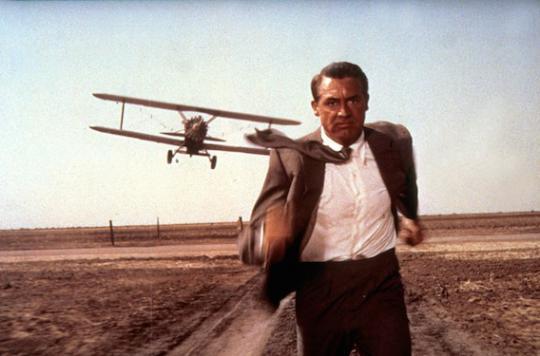The time of a few scenes, the master of cinema Alfred Hitchcock manages to disrupt the neuronal activity of the spectators. His thriller films promote tunnel vision.

Cary Grant stands in the middle of the American countryside. A spray plane flies at low altitude, approaches, approaches again. The actor is forced to lie on the ground to avoid the threat. For a short time, for the viewer, nothing else exists apart from this film projected on the screen. This is commonly referred to as being caught in history. You will undoubtedly have recognized the most famous scene of Death on the hunt, by Alfred Hitchcock. This master of cinema is known to captivate his audience. We find traces of this “tunnel vision” in the brain. Researchers from the Georgia Institute of Technology (USA) explain it in the journal Neuroscience.
A peak of activity in certain regions
Several healthy participants were placed in front of a screen. In the center, 10 excerpts from thriller films, from The man who knew too much To Alien, are projected. At the edge of the screen, a moving pattern is broadcast. Throughout the experiment, their brain activity could be measured using a functional MRI.
Normally, the brain concentrates on the film and on the environment of the film. Participants are therefore aware of the patterns that scroll around the periphery of the screen. But during moments of tension, they focus on the film and obscure everything else. In the brain, this is manifested by a drop in activity in the analysis areas of the peripheral visual field and a peak in the analysis regions of the central visual field. In Death on the trail, this can be seen from the moment the plane heads towards Cary Grant. The tension eases when the actor hides in the cornfield. At this time, the activity of neurons widens again.
A disturbance of normal functioning
“It’s a neuronal signature of tunnel vision,” explains Eric Schumacher, co-author of the study. During the most suspenseful moments, participants focus on the film and subconsciously ignore the check boxes. The brain focuses the participant’s attention, draws them to the center of the screen and to the story. “
The pattern projected on the screen around the film was particularly useful in demonstrating this: the movement it imprints is supposed to attract the attention of neurons in the calcarine fissure, the first region of the brain to analyze visual stimuli. The study therefore shows that the usual reaction is temporarily disturbed.
“A lot of people feel like they’re lost in history when they watch a good movie, and they feel like the cinema is disappearing. We now have brain evidence that supports this idea that people are transported into storytelling, ”concludes Matt Bezdek, co-author of the study. The consequences of this “disturbance” on the brain are still unknown. But according to the team, which is deepening research in this direction, it would promote the memorization of information related to the narration.

.
















